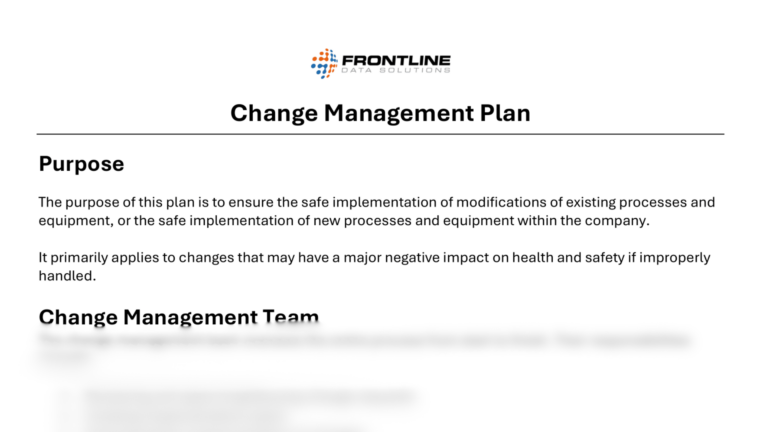In business, making swift changes without a plan is often a recipe for disaster. And while you might succeed with this strategy in the short term, it’s better to consider how changes might affect your company’s performance if they don’t pan out the way you pictured. Below, I share some of the top reasons why you need change management in the workplace.
Free Template!
Download this free change management plan template to get started at your site.
Quick Change Management Overview
Change management is the process of carefully modifying the variables within an organization so they don’t have an adverse impact on performance. It’s a method for overseeing the approval, implementation, and adoption of changes to things like equipment or work processes.
Some examples of changes that might go through the change management process include:
- Installing a brand new, potentially hazardous piece of machinery
- Restructuring the personnel hierarchy within your company
- Adding a new step to a process
- Changing the PPE requirements for a work area or position
- Switching suppliers for critical equipment components
Change management in the workplace involves careful consideration of all the effects that a change might have on safety, quality, and productivity. And the introduction of this process can have major benefits for overall company performance.
Reduce Operational Risks
While all businesses have risk exposure, change management helps reduce those risks in several ways. When you make changes too quickly, you run the risk of wasting resources. From wasted time to unnecessary rework, there are so many areas where you might be spending more than you need to. But if you carefully plan out and make changes, you can avoid many of these costs.
Another major area of risk reduction is in safety. This is especially true when you’re introducing dangerous equipment or modifying hazardous processes. You need the change management process to make sure workers are safe once the changes go into effect.
Finish Projects More Efficiently
Another benefit of change management in the workplace is that it can help you finish projects more efficiently. Consider this: how many projects have you started at work and then abandoned?
Change management helps you avoid this by:
- Requiring changes to go through an approval process before work starts
- Implementing a series of checks to ensure everything’s implemented correctly
- Documenting the entire process from start to finish
Because you won’t have to worry about creating a new approach for each project, you can spend more time completing action items. That means that your projects are more likely to stay on schedule.
Improve Team Organization
Lack of organization can kill new initiatives within a company. Change management provides a structured process that keeps your team on track. This is especially true if you use management of change software, like Frontline MOC, to coordinate everything. That’s because software systems make it easy to assign and track action items for everyone on the team. That way, you don’t have to manually oversee every element of a project by hand.
Avoid Redundancy and Rework
Documenting change management in the workplace can help avoid redundancies and rework. Oftentimes, people within a company try to solve a problem with the same approach that someone else already tried unsuccessfully. This often results in redundant failures.
But if you carefully manage changes and document your efforts, you’ll have a thorough record of all attempts to solve a problem. That way, you can avoid implementing a change that failed the last time around. Or you can modify the previous attempt so that you don’t have to rework the problem after implementation.
Lasting Change Management in the Workplace
The last, but certainly not least, benefit of change management is that it helps you make meaningful improvements to your company’s performance. Because it requires you to approve changes before you start working on them, you’ll be more selective with how you use your resources.
Overall, implementing change management in the workplace is an important step in transforming how your company operates. If you do it correctly, you’ll be able to reap the benefits for years, and hopefully decades, to come.





